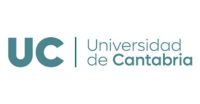The second session of the program of lectures Valdecilla Progress Reports will take place on December 13 and it will be given by Maria Kislikova and Arantza Onaindia who will present their scientific advances of their current projects.
Maria Kislikova is a specialist in nephrology at the University Hospital Marqués de Valdecilla and she gained a Post-MIR Contract Wenceslao López Albo.
Her conference will be about: “Changes of elastic fibres and epigenetic changes of vessel smooth muscle cells in chronic kidney disease” and is briefly summarized below:
The primary cause of morbidity and mortality among patients with chronic kidney disease (CKD) is the cardiovascular disease (CVD). In CKD-related CVD, structural and morphological changes occur in the blood vessels leading to arterial stiffness and calcification. These changes are underlined by the activation of vascular smooth muscle cells (VSMC), which proliferate, migrate, and alter the extracellular matrix (ECM) within the blood vessel wall. More than 200 differentially methylated regions were identified. These regions include genes related to ECM production (eg. LOXL1), atherosclerosis (eg. APOB), and signalling mechanisms involved in fibrosis and vascular remodelling (eg. SMAD3). With the 2-dimensional approach of elastic fibres was seen the geometric mean fibre width was 5.9µm (95% CI: 4.9-7.0) and fibre length 6.7µm (95% CI: 5.5-8.0). Dialysis patients demonstrated both thinner and shorter length fibres in the sections analyzed.
The second part of the program will be given by Arantza Onaindia, specialist in the Pathological Anatomy Unit of the Marqués de Valdecilla University Hospital and she gained a Post-MIR Contract Wenceslao López Albo.
The title of the conference: “A Next-generation sequencing approach for direct and definitive determination of Biallelic Cebpa mutations” and is briefly summarized below:
Acute Myeloid Leukemia (AML) with biallelic mutations of CEBPA represents a new entity acknowledged in the 2016 update of the World Health Organization classification of acute leukemia, however, definite determination of monoallelic versus biallelic nature in routine clinical testing is challenging due to distance between the N-terminal and C-terminal mutations. We developed a simple and clinical workflow-ready assay for direct and definitive determination of biallelic CEBPA mutations in 70% of double-mutant CEBPA cases in our dataset. The assay is predicted to cover 86% of reported mutations in key publications representing 50 AML cases with CEBPA double mutants. Additional refinement of the protocol is in progress to improve coverage for codons 1 to 138.
Each speaker will talk about 15 minutes followed by a small debate and at the end, coffee will be served to continue the conversation and encourage interaction between participants and attendees.
The meeting will take place on December 13, in lecture room 4-5, pavilion 16 of the HUMV (1st floor) and has a capacity of 30 people.
Researchers who attend 80% of the meetings throughout the academic year will receive a certificate of assistance.
For any questions regarding Progress Reports sessions, please contact the department at gesval1@idival.org




















